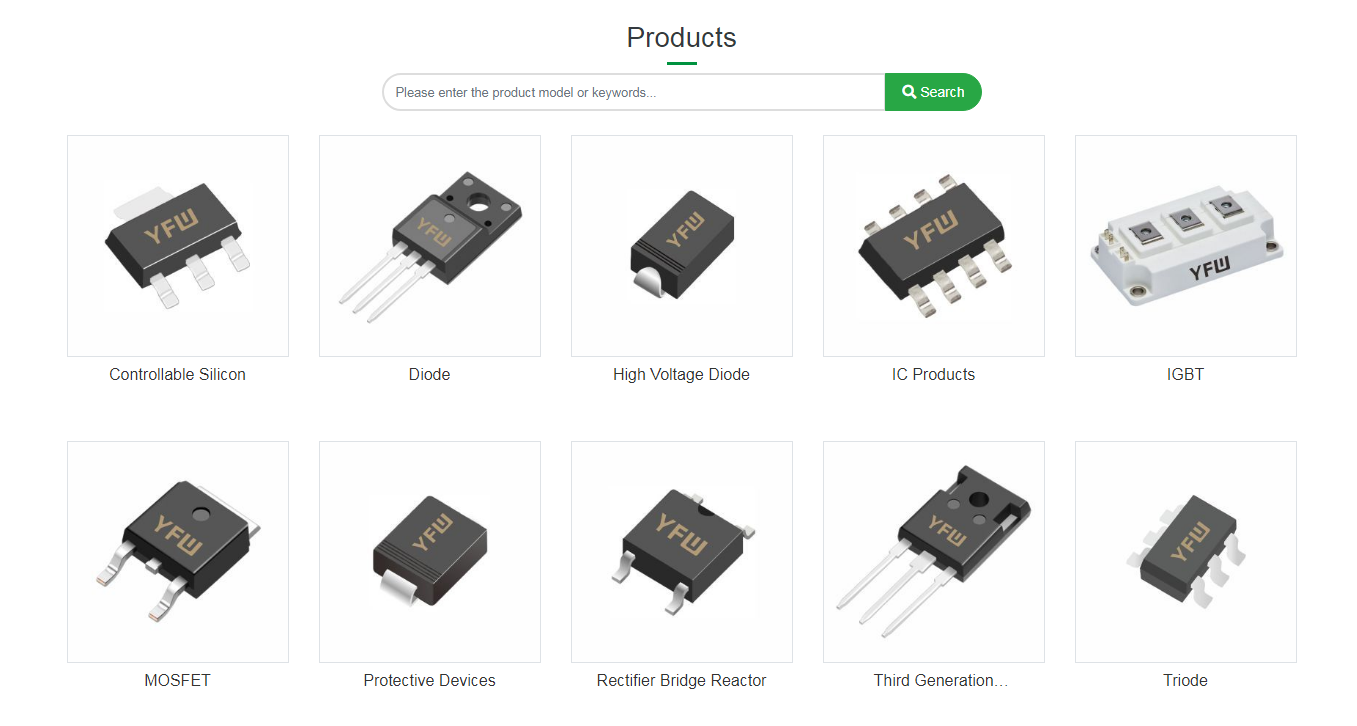Date:2025-03-18 Categories:Industry News Hits:900 From:Guangdong Youfeng Microelectronics Co., Ltd(YFW)
What is a fast recovery diode and its basic structure, characteristics, principles, applications, installation, analysis, and development history? A fast recovery diode (FRD) is a semiconductor device specifically designed to switch rapidly from the conducting state to the non-conducting in a circuit. Compared to traditional rectifier diodes, fast recovery diodes have a shorter reverse recovery time (trr), which makes them very suitable for high-frequency high-speed switching applications, such as switch-mode power supplies, inverters, and power electronics converters. Fast recovery diodes can reduce switching losses and improve the overall and performance of the system. 1. Basic structure: The basic structure of a fast recovery diode consists of a p-type semiconductor material and an n-type material, forming a pn junction between them. This pn junction acts as a one-way current controller in the circuit. Unlike ordinary diodes, the manufacturing process of fast diodes is optimized to reduce the recombination time of charge carriers, thus achieving rapid reverse recovery characteristics. This is usually achieved by introducing special dopants into the semiconductor material, optimizing the of the depletion region, and using advanced semiconductor manufacturing techniques. 2. Characteristics: 1. One-way conductivity: The diode conducts in forward bias and is cut in reverse bias. 2. Low forward voltage drop: The diode has only a small voltage drop when conducting. 3. High reverse breakdown voltage: Under reverse bias, diode can withstand a high voltage without being broken down. 4. Fast switching speed: Special types of diodes (such as Schottky diodes) can achieve very switching. 3. Principle: The working principle of a fast recovery diode is similar to that of a normal pn junction diode. In forward bias, the-type side is connected to the positive pole, and the n-type side is connected to the negative pole. The depletion region narrows, and current can flow through the p junction. In reverse bias, the depletion region widens, and the current is blocked. The key characteristic of a fast recovery diode is its ability to quickly stop the flow of after being in reverse bias. When the voltage polarity suddenly changes, the minority carriers stored in the pn junction need to be cleared before the current can be cut off. Fast recoveryodes are designed to accelerate this process, thus achieving the purpose of quickly recovering to the off state. 4. Applications: Fast recovery diodes are widely used in various electronic power electronic devices because of their rapid switching characteristics: 1. Switch-mode power supplies: Used as rectifier devices in power converters to provide efficient power conversion. . Inverters: Used in solar inverters and other types of inverters to convert DC power to AC power. 3. Motor control: Used in motor drive circuits achieve precise motor speed and torque control. 4. Welding machine: Used as the main rectifier element in a welding machine to provide a stable DC output. 5 Communication equipment: Used in the power management of RF power amplifiers to ensure clear signal transmission. 6. Vehicle chargers: Used in electric vehicle chargers for efficient energy and conversion. 5. Installation: The installation of fast recovery diodes should consider the following factors: 1. Polarity: Ensure the correct polarity connection of the di, usually the end marked with a ring or arrow is the anode. 2. Heat dissipation: Since heat is generated during the switching process, it should be dissipated effectively

Previous:What is a Switching Diode and its Basic Structure, Characteristics Issues and Development History
Next:NZT560A 1A 80V SOT-223 Marked NZT560A Small Signal Transistor Y Micro Brand